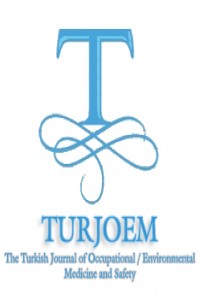Öz
Rheum species
are medicinally important plants due to the presence of anthracene derivatives
occurring in the subterranean parts of the plant. Rheum ribes L. (Polygonaceae)
is the source of one of the most important crude drugs in the Middle East,
roots are used as oriental laxative medicine and an antipsoriatic drug. R.
ribes is locally known as ‘‘ışkın, uçgun or, uçgun’’ and grown mostly in Eastern
Turkey, Lebanon and Iran.
The aim of this
study was to investigate the mechanism by which Rheum ribes induces
antiprolif-erative and apoptotic effects in HT 29 human colorectal carcinoma
cells. Dose and time dependent cytotoxic effects of Rheum ribes were evaluated
by the 3 (4,5 dimethylthiazol 2 y1) 2,5 diphenyltetrazolium bromide (MTT)
assay. Cell Proliferation Kit I (MTT) was purchased from Roche (Roche
Diagnostics, Mannheim, Germany). Briefly, HT 29 cells were seeded at a 1×104
concentration in 96 well plates overnight and then treated with 10 µl MTT
labeling reagent. After 4 h, 100 µl of the Solubilization solution was added
into each well and incubated 24 h in a humidified atmosphere (+37 °C, 5-6%
CO2). Absorbance of the formazan product was measured at 550 and 600 nm
wavelenght by Elisa microplate reader. Results are expressed as a percentage of
the untreated controls.
Cell Death Detection Elisa Kit (Roche) was used to detect apoptotic
effect of Rheum ribes, according to the manufacturer’s protocol. Additionally,
propidium iodide (50 µg/mL) and ethidium bromide (50 µg/mL) were used for
detecting the apoptotic cells. Results were evaluated comparatively and
statistically.
Anahtar Kelimeler
Kaynakça
- Mehmet Kadir ERDOĞAN Department of Biology, Faculty of Arts and Sciences, Bingöl University, 12000, Bingöl, Turkey
Öz
Kaynakça
- Mehmet Kadir ERDOĞAN Department of Biology, Faculty of Arts and Sciences, Bingöl University, 12000, Bingöl, Turkey
Ayrıntılar
| Bölüm | Articles |
|---|---|
| Yazarlar | |
| Yayımlanma Tarihi | 16 Şubat 2017 |
| Yayımlandığı Sayı | Yıl 2017 Cilt: Volume 2 Sayı: İssue 1 (1) - 2.İnternational Congress Of Forensic Toxicology |

